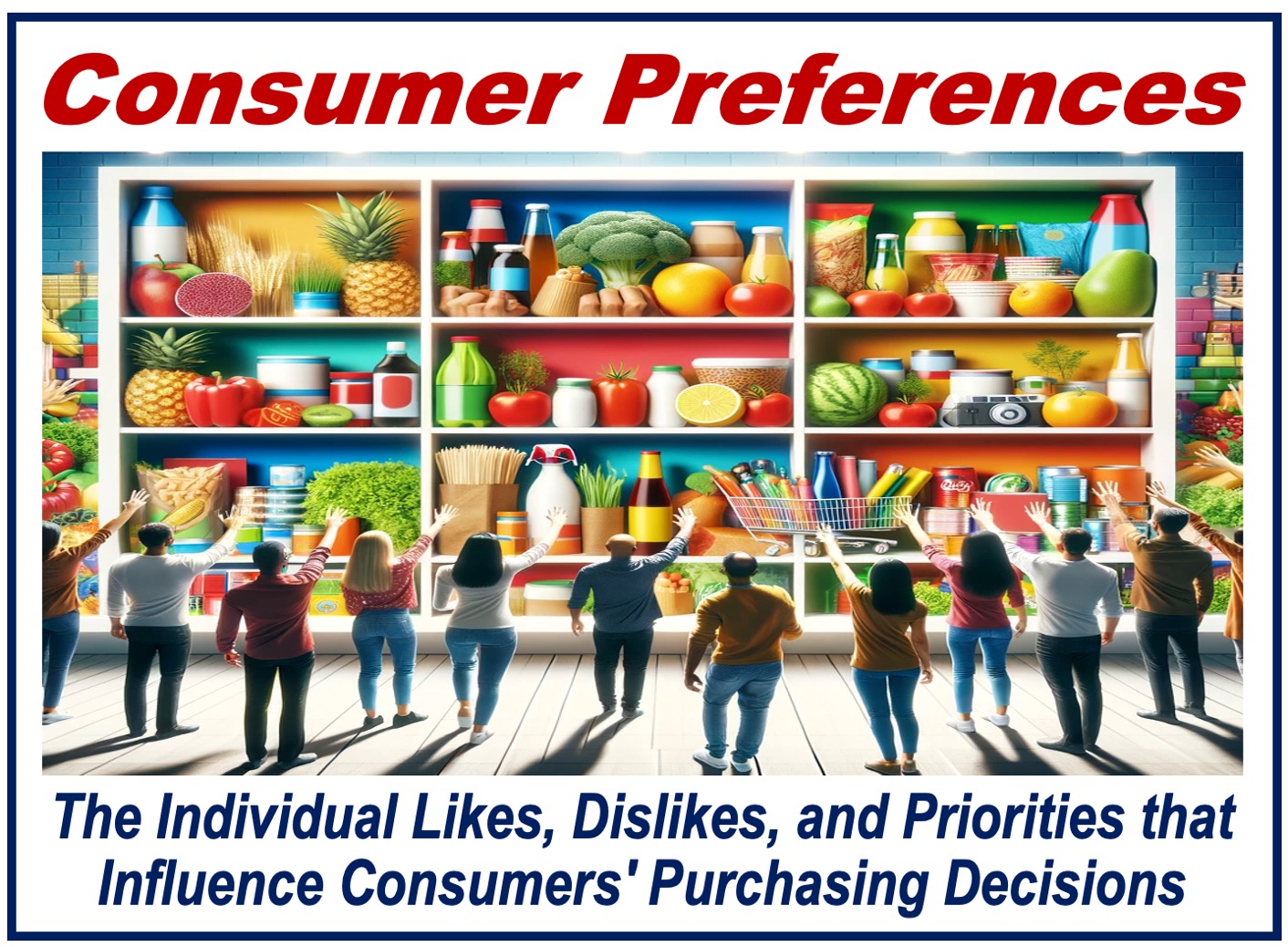The term Consumer Preferences refers to the likes and dislikes that influence the buying behaviors of individuals or groups.
Your consumer preferences dictate why you choose one product or service over another. They shape what your daily, weekly, or monthly basket of goods and services looks like.
Consumer preferences in one market tend to be different from those in another market.
Understanding what consumers prefer and how their purchasing behaviors are impacted by those preferences is crucial for business. It is especially important if you are trying to satisfy your customers’ needs and desires effectively.
WallStreetMojo has the following definition of the term:
“Consumer Preferences are a set of properties or elements that define the buying behavior of consumers in a given market. As they affect market demand, companies evaluate and understand consumers’ mindsets and ascertain the forces that compel them to buy specific products.”
What influences consumer preferences?
Consumer preferences are influenced by several factors, including:
- Price: Cost of the product or service, affecting affordability.
- Quality: Perceived value and durability of the offering.
- Brand loyalty: Preference for familiar brands based on past experiences.
- Cultural influences: Impact of societal norms and cultural background.
- Social influences: Effect of friends, family, and social media.
- Personal tastes and values: Individual likes, dislikes, and ethical considerations.
- Environmental concerns: Preference for eco-friendly and sustainable options.
- Technological advancements: Influence of the latest technology on product preference.
- Marketing and advertising: Impact of promotional activities on consumer perception.
- Product availability: Ease of finding and purchasing the product.
- Economic conditions: Influence of the overall economy on spending behavior.
- Consumer trends: Current popular preferences and behaviors in the market.
- Health and safety concerns: Importance of products being safe and promoting well-being.
- Convenience: Preference for products that are easy to use or access.
- Customer service experience: Impact of pre- and post-purchase support.
- Psychological factors: How emotions and psychology influence buying decisions.
- Peer recommendations: Influence of suggestions from people one knows personally.
- Online reviews and ratings: Impact of feedback from other consumers.
- Product design and packaging: Influence of a product’s appearance and presentation.
- Lifestyle compatibility: How well a product fits into an individual’s way of living.

Businesses and consumers benefit
Understanding or being aware of consumer preferences not only benefits businesses; it also empowers consumers by driving competition and innovation in the market.
Consumer power is a phenomenon that emerged in the twentieth century and has become a potent force today. Consumer power is the influence consumers wield to shape market trends and demand through their purchasing choices, such as boycotting unethical practices, and driving innovation and competition.
As companies strive to meet the evolving preferences of their target audience, consumers enjoy better quality products, a wider variety of choices, and more innovative solutions to their needs.
Conclusion
Consumer preferences are influenced by myriad factors. They help shape market dynamics and ensure that the offerings of businesses align with what their customers need and want.
Video explanation
This MBN video explains what consumer preferences are using simple and easy-to-understand language and examples.
